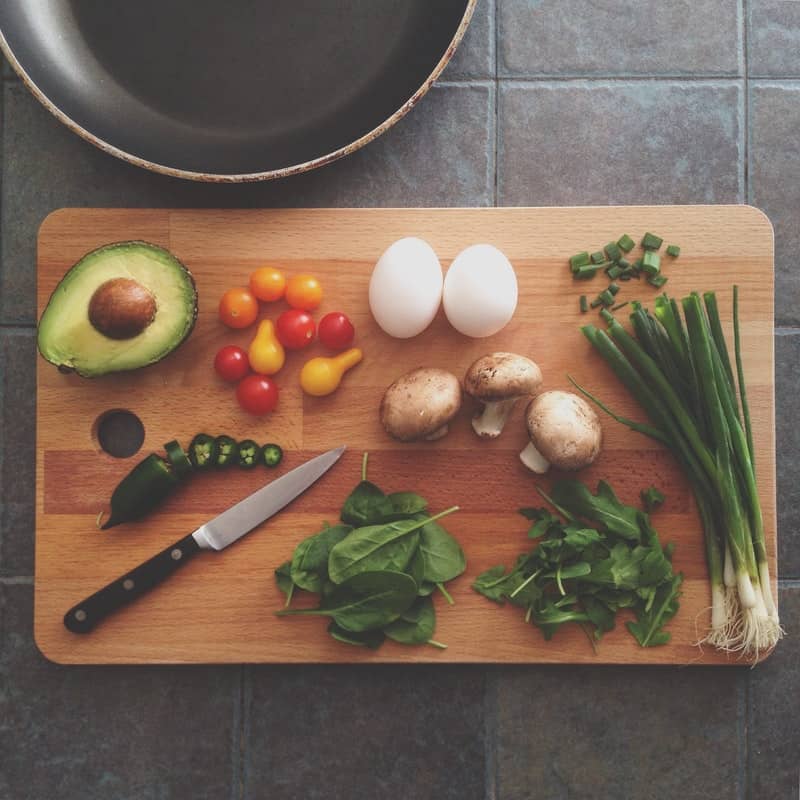With the modern tendency for exchanging culinary traditions of different cuisines and countries, no wonder that hundreds of recipes were mixed and interchanged. And of course, it could not happen without the exchange of seasonings and ingredients, too!
One such thing we widely make use of today is called chives and it reminds of green onion pretty much. Perhaps, because if this, home chefs often get confused and can’t decide what to add to their dishes since green onion and chives seem to be pretty much the same.
But are chives the same as green onion in fact?
This is what we are about to figure out today.
What Are Chives?
Let us start with this interesting greenery that occupied our kitchens not so long ago. Shortly speaking, that green vegetation that we make use of for cooking is the leaves of a plant that also has edible flowers.
This plant is widely spread in nature across most of Europe, Asia, and North America. Some of you might even see it many times: it is pretty tall growing as high as fifty centimeters, with pale purple star-shaped flowers and grass-like leaves.
Despite the fact that this plant grows wild perfectly, people also grow green chives successfully in pots not only for repelling pests but also in order to make use of those green stalks that we love adding to salads. Unopened immature flower buds of chives can also be incorporated in quite many foodstuffs, for instance, vegetables, scrambled eggs, fish dishes, potatoes, soups, etc.
Are chives in the onion family, somebody may ask? The inquiry is quite reasonable since both have a very strong resemblance. And indeed, chives are closely related to common onions, and also garlic, and some other similar plants.
Difference Between Scallions And Chives
Are chives the same as scallions? Quite many people often end up asking this question when making the choice of which greenery to buy. Well, on the one hand, chives are close relatives to scallions which is not a secret taking into account their extreme likeness of appearance.
However, the “chives vs scallions” issue is not so simple. Scallion is a sort of onion in fact with the bright-green stalks and white bulbs. It is harvested at the very early stage when the veggie is still a bit not grown fully, this is why the bulbs are small, and they lack that yellow peel which old veggies have.
Because of being harvested so early, scallion has a very delicate (compared to the mature onion) taste, even though it is still a bit pungent. The texture of both the bulbs and the stalks is very delicate, too, unlike the harsher greenery of the older bulbs.

In terms of any specific distinctions, we can highlight the following:
- Leaves of chives are thinner and more grassy than of scallions whose stalks are wider and thicker.
- Chives only have their leaves and flowers edible whereas scallions can be consumed all.
- Scallions have a somewhat stronger flavor compared to chives.
- In terms of use, any part of scallions can be incorporated into the dish whereas chives can share only their leaves with us.
What Is Green Onion?
Since now, we are informed that chives are not basically the onions, even though they are related, the inquiry of “are green onions chives?” is no longer existing.
Now let us take a closer look at what we are used to calling the green onion. You might probably notice already that we mentioned scallions above, and we said they are in fact onions. Since what we call green onions and scallions look completely the same, aren’t you curious about their origin?
In fact, the puzzle can be solved rather quickly. The greenery that is known as scallions, green onions, and spring onions have only one distinction, and that distinction is their age. Well, in fact, how long they grow prior to being picked.
Basically, they are all different stages of onions, and we can easily tell the difference between each of them by simply taking a look at their bulbs:
- scallions will have the smallest and the thinnest ones, often as wide as the stem of the veggie
- green onions’ root parts will be somewhat bigger and more mature, elongated in shape
- finally, the bulbs of spring onions are round and well-shaped
There might be a minor distinction in their taste but it is so insignificant that most of us would not even notice that.
For this reason, all three variations of the same veggie can be successfully used in many recipes as a substitution for each other.
Chives vs Green Onions. Comparative Analysis

Most of us would read this “green onions vs chives” explanation and stop. The distinction is found so why would we bother about this longer? However, the most curious and picky chefs are still eager to learn what exactly makes these two kinds of greenery distinct.
What is the difference between chives and spring onions? Chives and green onion (or spring onion) belong to the same family, so can they be different in terms of culinary use?
- The first and the most crucial distinction is that chives belong to herbs and onion is a veggie. Herbs are known for having flowers at a certain stage of their maturation, as well as seeds to spread, whereas onions don’t have those features.
- Another distinction that comes from the previously provided is that herbs are used for flavoring the dishes whereas veggies are often a primary foodstuff. And indeed, chives are always added to the meals to enhance their aroma, but onions can be consumed as food.
- Green onions can be consumed whole, from bottom to the top, but chives have only their leaves and flowers edible.
- When we think of the way we can incorporate these two into our meals, chives (no matter fresh, dry, or powdered) are only good for adding more aroma to the foodstuff. Onions, on the other hand, can be fried, baked, or eaten raw in a sandwich, for instance.

These are the basic distinctions that make these two kinds of greenery stand apart. However, this is not the end!
Difference Between Chives And Green Onions In Terms Of Nutrition Value
When we think of chives and green onions, we might think of their health benefits, too. Onions are famous for being a good antiviral remedy, but what about their counterpart?
You might be surprised, but chives will be the way better option for adding more nutrition to the dish!
- Chives are richer in fiber and protein than green onions
- They also have vitamins A, C, and B6 that onions lack
- These grassy leaves are packed with iron, magnesium, and calcium, too
Yes, chives are more pricey, but whenever you can, opt for buying some since it is a great natural additive to your diet.
How to Use Green Onion And Chives For Cooking
Feel not sure what to use next time you’ll be cooking, chives, or green onion? Well, people often have that problem, but in fact, this issue can easily be solved.
- As we all know, green onions are often used as a garnish on top of salads or hot savory meals. But why said we can’t add it to soups, stews, or even scrambled eggs in the morning?! Besides, chopped flavorus greenery will add more aroma to your toast when sprinkled on top of melted cheese.
- As for the chives, this herb is better to be added to all sorts of foods that need more flavor. Whether it is a first or a second course, feel free to add a pinch of chives powder or some finely chopped stalks to make your taste buds tickle!
A Bit About Storage
Being aware of how to make use of the foodstuff is good, but to keep it and use it longer, we must know more about how to stock it properly.
Somebody might wonder: “what is so difficult about keeping green onion stalks?” Indeed, it seems so easy! But in fact, storing them correctly is no less tricky than dealing with lettuce.
Generally speaking, both onions’ and chives’ stalks last approximately the same; only onions will survive for one or two noon longer. But to use them to the fullest, proper storage is a must:
- refrigerate both kinds of greenery
- wrap the roots of chives and the onions’ bulbs with a slightly moist napkin and carefully lay the stalks into a zipper bag. Do not close it tightly, those stalks will need some air around
- Place them both in a section where nothing can crush the stems/leaves. Damaged green onions and chives tend to wilt way faster
If everything is done right, the onions will stay edible for nearly seven days, and chives for a bit less time.
Now you know the basic and more detailed distinctions between chives and green onions. We told you what makes them distinct even though both belong to the same family; you also learned more about their nutritional value and the way both the veggie and the herb can be incorporated into our daily eating.
From now on, next time anyone would like to make their meal more varied in terms of flavor, you guys know what to look for on the store shelves!
[wp-faq-schema title=”Frequently Asked Questions”]

Can you eat the green leaves of onions? Where can they be used in foods?
Well, yes, you can eat them raw if you like, but I’d recommend adding them to salads and hot savory foods like stew or soup.
Can I eat chives raw? I always used the powdered herb before but I recently saw a bunch of fresh greens and now I’m curious whether it’s like onions and can be consumed raw.
I know they can be eaten solo but I personally never tried. I guess, it’s like with onions: can be consumed as-is but always better in dishes.
Please, help me to figure out: are green onions the same as scallions?
In fact, they are. Green onions are the next stage of the scallions in fact.
Are green onions and chives good for you? What’s so beneficial in eating them, I mean?
Well, I read that both are filled with vitamins, and chives are also rich in different elements like iron, calcium, etc.